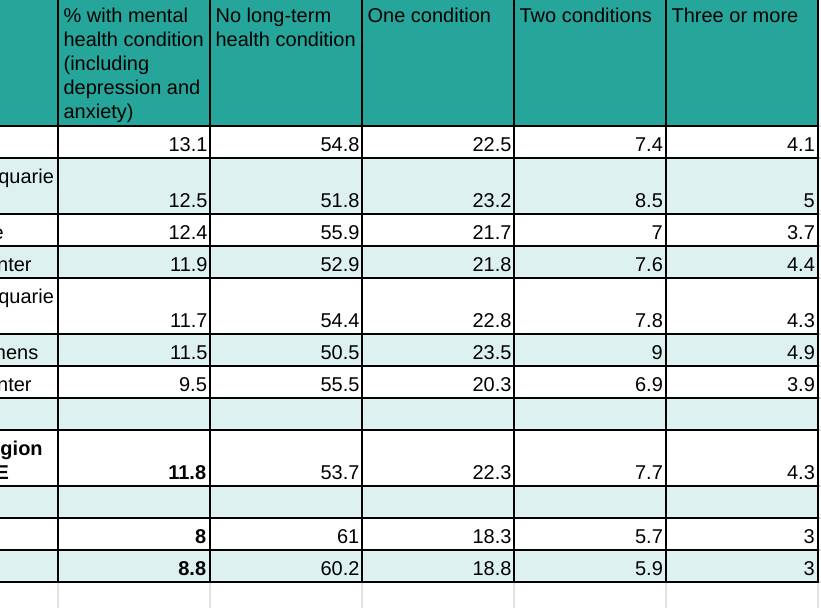
RESIDENTS of Mayfield and Warabrook are more likely to have a poor mental health condition than anywhere else in Australia, according to recently released Census data.
The Australian Bureau of Statistics has released data tracking the prevalence of long-term health issues among the population which featured as a question in the Census for the first time in 2021.
It shows that the Hunter region had a higher incidence, on average, of long-term mental health issues, at nearly 12 per cent of the population, compared to the state and national averages of 8 per cent and 8.8 per cent respectively.
While Mayfield and Warabrook stood apart with 2,754 people living with a long-term mental health condition, at 17.8 per cent, at a suburban level, overall the worst results were for people living in Maitland, where 13.1 per cent of the population live with a long-term mental health condition.
Behind Maitland, Lake Macquarie East came in at 12.5 per cent, Newcastle at 12.4 and the Lower Hunter (excluding Newcastle) at 11.9 per cent.

The region also stood out from the state and nationally for the number of people living with one of 12 long-term health condition categories, which included arthritis, asthma, cancer, dementia, diabetes, heart disease and a lung condition.
One in five people living in the region said they lived with a long-term health condition, an average of 22.3 per cent of the population, while the state average sat at 18.3 per cent, and nationally the rate was 18.8 per cent.
While 58.7 per cent of the Hunter region's population said they lived with no long-term health conditions, the rate was much better on average throughout the rest of NSW at 64.9 per cent, and nationally at 64.1 per cent.
Overall, more than 8 million people had at least one long-term health condition, or nearly one third of the Australian population, at 31.7 per cent.
The proportion of people with a long-term health condition increased with age underlining the link between age and the incidence of long-term health conditions, except for mental health, which had a fairly even distribution across age groups.
Mental health was the most commonly reported long-term health condition, followed by arthritis (8.5 per cent) and asthma (8.1 per cent).
Many people with long-term health conditions said they lived with more than one condition, the most common being arthritis and mental health condition (1.7 per cent of the population or approximately 423,000 people) and arthritis and asthma (1.5 per cent or approximately 380,000 people).







